Not just window dressing: High-performance curtains, blinds and shutters

Internal window coverings can protect privacy and dramatically improve the thermal function of a house, and if you choose with care, they can help keep you comfortable for years.
Windows are a complex and interesting part of the building fabric of a house. They admit light, warmth and fresh air; they connect the occupants visually with the outside world; sometimes they frame spectacular views. But from an energy efficiency point of view they are usually the weak link in the building structure. Through windows up to 40 per cent of a home’s heating energy can be lost and up to 87 per cent of its heat gained, according to Your Home. High-performance, double or even triple glazing helps this equation, as does careful consideration of window size, location and orientation. But to ensure the best thermal performance for your home, it’s worth also considering effective window furnishings. Blinds, curtains and shutters can improve a window’s performance, make your home more comfortable and reduce energy costs.
Where to start?
“Internal window furnishings serve a variety of purposes, including light control, privacy, reducing glare, heat reduction and heat retention,” says interior designer Megan Norgate of Brave New Eco. Soft window furnishings can also buffer sound. If you’re building or renovating, consider window treatments as part of the design process, because taking into account the associated requirements and thermal contributions may mean you make different decisions about the extent and location of your glazing.
When choosing a product for a particular window, it’s important to consider the main purpose it will serve. Keep in mind that if minimising heat gain in summer is the main aim, it’s best to keep the sun off the glass in the first place with an external shading device such as an eave or awning (see our article on external shading options in ReNew 138 for more information).
Semi-transparent blinds or curtains are a good option if privacy or glare reduction is the primary aim; they can be combined with heavier curtains for night-time heat retention. And this is where great window coverings really come into their own: “They can act like de-facto double glazing if they are multi-layered and tight fitting to the window,” says designer Dick Clarke of Envirotecture.
Snugly fitted and insulative blinds and curtains trap a layer of still air next to the window, reducing transfer of heat from the room to the window and thus outside. They also provide a feeling of cosiness: “If you are sitting in a warm room at night between an uncovered window and your heating source it is likely you will feel a chill, partly because of the draught created by the interior heat making a beeline for the cool exterior. Properly fitted and lined curtains and window treatments are the best way to avoid this effect,” explains Megan.
Choosing your style
There is a wide range of products available depending on the purpose to be served, your budget, and your design preferences.
Curtains
According to Megan, the humble and currently somewhat unfashionable curtain is set to make a comeback. “Heavy curtains are best for thermal performance and are great to block out light,” she says, “but may not work where floor space is limited or there is no space above the window to mount tracks or at the side to accommodate the open curtains.” There are other considerations to ensure your curtains are effective: they should have an enclosed pelmet at the top or drop straight from the cornice; touch the wall at either side; and just kiss the floor. If not, and as Energy Freedom Home explains, the warm air created by a heater will rise to the top of the window and be drawn down into the space between the window and curtains, driving a current of air that can rapidly cool the warm air in the room and can increase condensation.
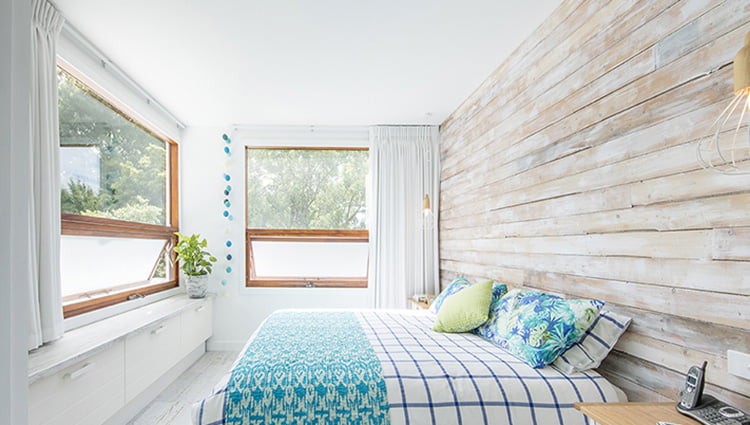
Pelmets can usually be easily retrofitted to existing curtains and need not be visually intrusive boxes. They can be made from just about any solid material; the most common is timber, but lightweight plastic sheet or even cardboard is an inexpensive alternative, and especially useful for renters. Elizabeth Wheeler, building designer and product specifier for Future Focused, suggests that if you prefer a streamlined look, you can consider integrated bulkheads instead, but notes that usually these must be factored in during the design of your home. One invisible track system that provides this integrated effect is the Ezy-Pelmet from Ezy-Jamb. Another invisible, easy-to-DIY option is a retrofit pelmet cap that sits between the wall and the curtain track and touches the back of the curtain; Ecomaster offers ‘Invisible Pelmets’, an acrylic product sold by the metre.
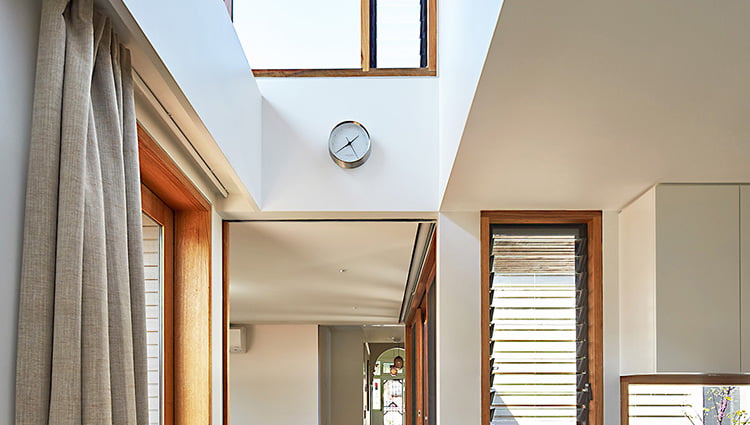
Blinds
Effective blinds come in a range of styles including roller, roman and honeycomb, and are a versatile and effective option, as long as due care is taken to fit them snugly (ideally within the window reveal) to minimise air gaps around the edges. (Vertical blinds and standard venetian blinds can help regulate sunlight and privacy but are of limited help with thermal performance.)
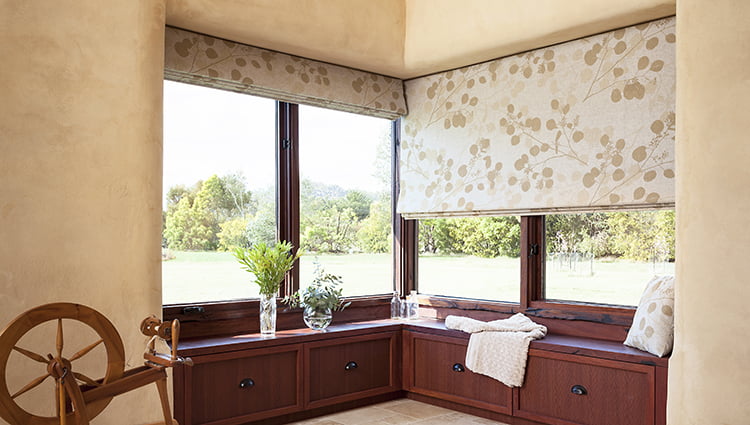
Megan notes that roller blinds are generally cheapest but less thermally effective, and heavy backed roman blinds can be a good option for small and narrow windows where there isn’t room for curtains. However, her favourite type of blind is the honeycomb, a concertina style that’s made from fused layers of fabric that form a series of hexagon-shaped tubes when open, and is very compact and visually unobtrusive when closed.
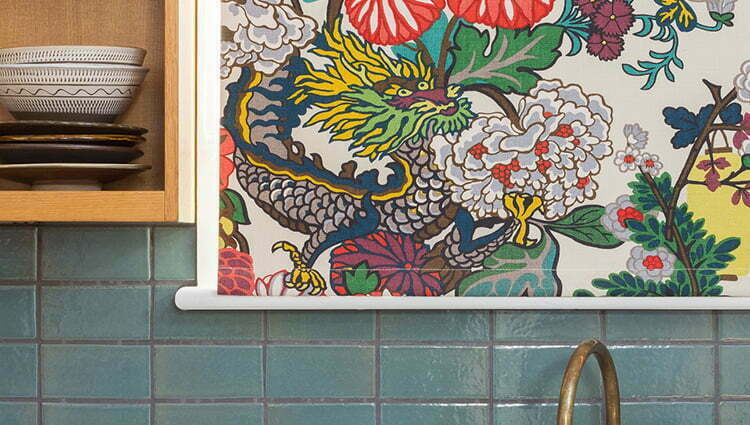
Dick is a fan too, and summarises the benefits: “They can be blackout, or translucent to insulate while admitting some light; they can be designed to open from the top down and/or from the bottom up, providing versatility for privacy; they are very good insulators if fitted well; and they are clean and contemporary but also work with traditional decor.” Luxaflex Duette blinds by Hunter Douglas were the first to feature this honeycomb design, and they are now available in double and triple honeycomb construction for even greater insulation. Many other manufacturers offer a similar product.
David Baggs, CEO of Global GreenTag International, describes the ‘next tier’ of blinds as those that run in side tracks with an enclosed box at the top, much like a pelmet: “they are great as blockout blinds for bedrooms, as light doesn’t leak around the sides,” he says, “as well as performing well thermally.” Melbourne manufacturer Vertilux’s Fully Enclosed Kassett roller blinds are an example, and are available in varying degrees of light permeability up to complete blockout.
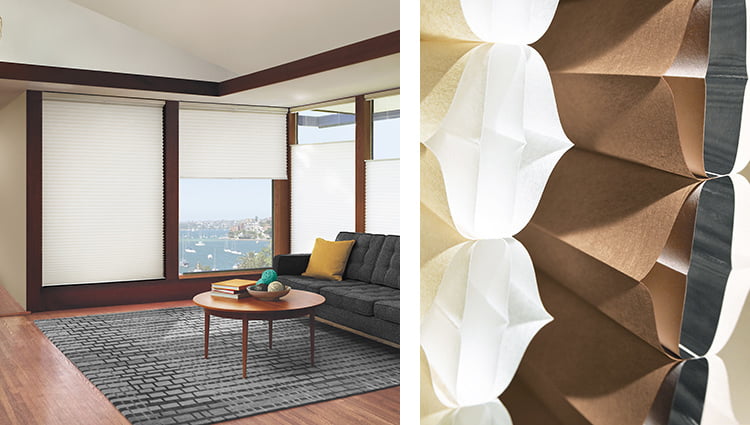
Shutters
Plantation shutters – usually made from timber or PVC, with adjustable blades – are currently a popular choice for interior window coverings. They provide privacy, but also block a considerable amount of light even when the blades are tilted open. While louvre or blade-style treatments are probably best suited to external shading applications, “they do have some thermal effect when used inside if you can get a good seal; it comes down to good design,” says David.
“And remember that if they are timber it needs to be sustainably certified.” Elizabeth’s recommendation for choosing shutters is to “preferably source a locally made shutter that uses plantation timbers. If you can, buy the shutter unpainted so you can use your own low-VOC finish.”
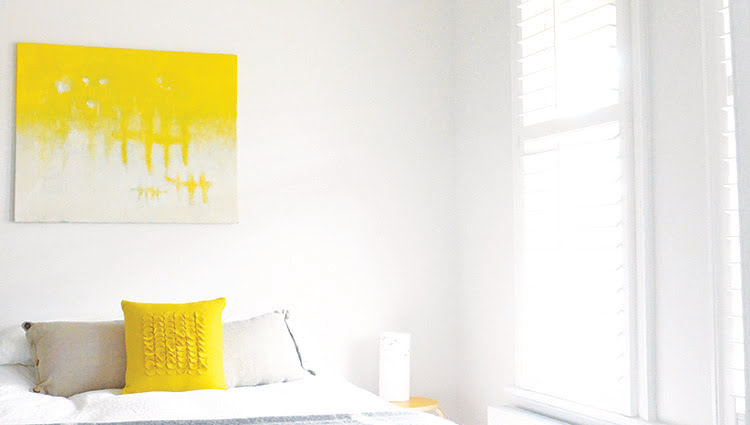
Materials
When it comes to materials for your window treatments, the possibilities are just about endless. Curtains, roller and roman blinds can be made in any fabric that takes your fancy, though Megan cautions “pick your fabrics carefully as curtains are a long-term investment. Make sure you don’t pick something that will date in five years, as with good care they will last much longer than that.” David suggests opting for natural fabrics such as cotton, linen or hemp – organic if possible – and if your blinds are mainly for privacy or shading, “you can get a great diversity of rapidly renewable bio-based materials, like rattan, reeds, and bamboo. I have even seen woven products made out of dried hyacinth, [a plant] which is a major waterway pollutant in developing countries.”
Honeycomb blinds and light-admitting roller blinds tend to come in a more limited range of specially designed polyester, acrylic or vinyl fabrics, sometimes with reflective backing. Not so natural, but some brands offer options with recycled content, low-VOC (important for interior air quality) and other sustainable credentials; for example, Vertilux is proud of their Greenvision fabrics which are “PVC-free, low-VOC, Ecospecifier assessed and can also assist in the achievement of points as set by the Green Building Council of Australia.”
David recommends looking for phthalate-free acrylic and vinyl products, as some phthalates can have particularly detrimental health effects when off-gassed; the Global GreenTag certification program will stop certifying products with specific common phthalates after 2019.
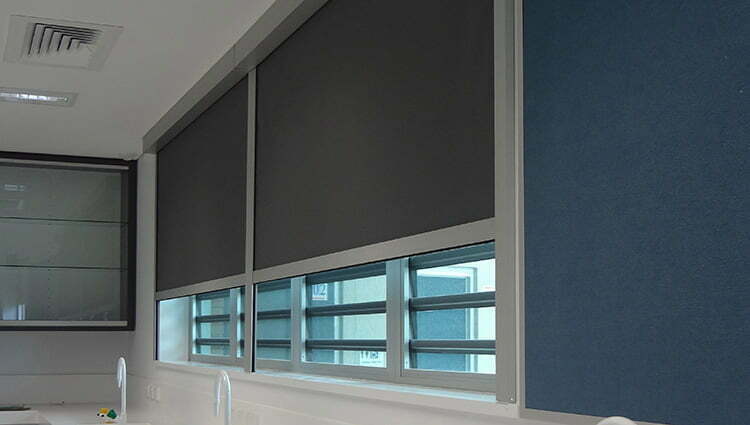
It’s worth looking for fabrics and products that carry an eco certification from an independent body such as Ecospecifier, Global GreenTag or Good Environmental Choice Australia (GECA). You can also look for products that can be recycled at end of life, and for manufacturers who have sustainability policies and material use and waste minimisation plans in place.
Consider durability too. Although interior furnishings are not as exposed to the elements as external window coverings, they will still need to withstand strong sunlight, especially those that are on north and west windows and designed to be used during the day rather than purely for heat retention at night. Choose good quality materials – particularly backing fabric – and ask about expected lifespan and warranties.
In good news for consumers, the Blind Manufacturers’ Association of Australia (BMAA) is developing a rating scheme for internal and external window coverings. The WincovER energy rating scheme due to be launched in the second half of 2017, will provide products with a simple star rating for both heating and cooling performance, allowing easy comparisons between products. BMAA president Joe Turner explains that ultimately, a WincovER module will be added to the existing WERS (Window Energy Rating Scheme), which rates the energy impact of a window system on a house; this will give an understanding of the expected performance of window and window covering together. Keep an eye on the BMAA website for updates.
Other considerations
Ease of use: Make sure the treatment you choose is suitable for the window or door style and use; inward-opening windows will need special consideration, and a pull-down blind might just get in the way of a door opening. Take care also that blinds clear any window and door hardware like latches and winders.
Blinds and curtains will, of course, only deliver benefits if they are actually used. While it’s true that some active ‘driving’ of a house is usually necessary to achieve the best passive thermal performance, “opening and closing lots of blinds every day through summer and winter can be tedious,” says Elizabeth; this is especially true for hard-to-access blinds. “If you think you might be inclined to just give up and leave everything open, firstly consider whether you really need all that glazing. If you do, then consider mechanisation.” There are plenty of options for mechanising blinds these days, some allowing remote control via a smartphone app, and even systems that use a sun sensor to adjust blinds automatically. These systems do add considerable cost and complexity, though.
Budget: Good-quality internal window coverings for a whole house can be a considerable expense: Megan estimates $10,000 to $20,000. “If possible, it’s worth budgeting it into your costings for your home build or renovation, and thinking about it as part of the design stage.” Planning to complete the installation in stages is another option, but “you’ll need to consider how to manage your building’s thermal performance while you stage your fitout, and/or while shade plants grow,” says Elizabeth.
Maintenance: Most parents of young children would think twice about buying a white couch; window furnishings deserve the same consideration! “Think about cleaning: food and dirt from grubby mitts, dust and splashes from spills,” suggests Elizabeth. “Paying attention to cleaning and repairing fixtures is an important yet often-overlooked aspect of a more sustainable home.”
Safety: Remember to pay attention to the safety of blind cords, which present a real strangulation risk for small children. Even if you never have young visitors, the next resident might.
Strata residents: If you live in an apartment, it might be necessary for your internal window coverings to do extra duty for shading and heat reduction, as you may have limited freedom to install external window shading. Exterior walls are generally considered to be common property and alterations require approval from the owners corporation; even installing film on your windows to reduce heat gain can violate strata regulations as it changes the external appearance.
Green Strata’s Christine Byrne has this to say about improving a strata dwelling: “A lot of what you can do is similar to a freestanding house, but you need to consider the extra layers of approval required. Don’t assume it’s not possible or too hard. Understand where the extra layer of approval is relevant, understand what you have to do to get approval, and make your decision from there. If you know the steps along the way, you can make an informed decision about what to do.”
Generally, you’ll have a lot more flexibility to install interior window coverings than external shading (although if you’re a tenant, you’ll probably need your landlord’s permission to drill into walls). But Christine cautions that some buildings even have bylaws about internal window furnishings, for example only permitting curtains if they have a white backing; it pays to check your strata rules before getting started.
If you are relying on internal window furnishings to prevent heat gain in summer, “consider options that still allow some light to penetrate,” recommends Elizabeth. “While they are not as effective as full block-outs, darkened rooms can be really depressing in daytime – especially for days on end.”
The next big thing?
There is certainly scope for further development in design and materials. Joe Turner is excited about the continuing development of mechanisation and automation systems for blinds, to maximise their effectiveness. On Megan Norgate’s wish list is a blackout thermal curtain lining with recycled content, and a wider range of integrated curtain pelmet and track options. Dick Clarke is looking forward to seeing the more widespread availability in Australia of integrated blinds inside double or triple glazing (also known as ‘blinds between glass’), already quite widely used in Europe.
In the meantime, when they are chosen with care and an eye for performance as well as aesthetics, interior window coverings can make a huge difference to the comfort and efficiency of your home, and the range that’s currently available is excellent.
Recommended for you
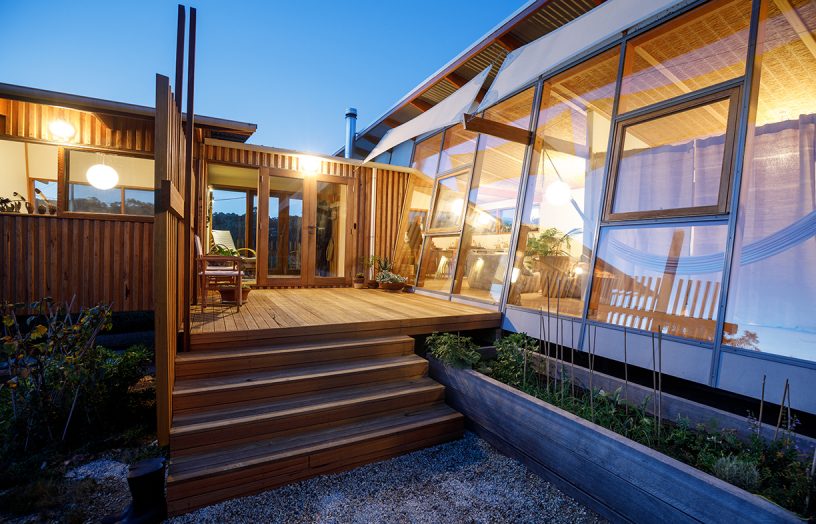 Sustainable Design
Sustainable Design
Windows: In the frame
Lance Turner and Dick Clarke introduce you to the delicate art of window selection, and explain the key terms and concepts to get you started.
Read more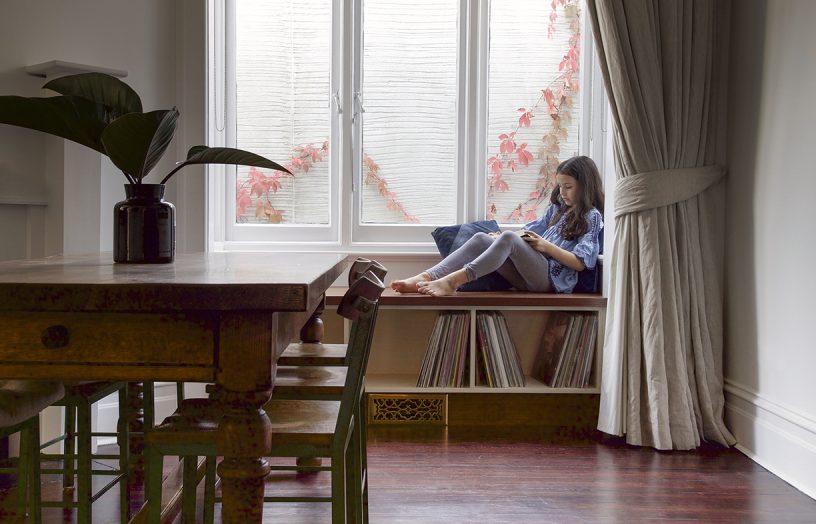 Sustainable Design
Sustainable Design
Not just window dressing: High-performance curtains, blinds and shutters
Internal window coverings can protect privacy and dramatically improve the thermal function of a house, and if you choose with care, they can help keep you comfortable for years.
Read more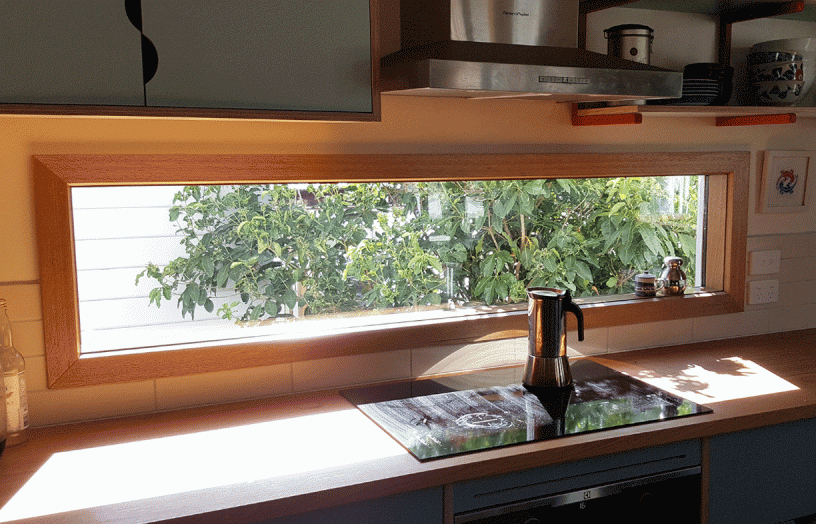 Efficient homes
Efficient homes
Glazed and enthused: window replacement case study
Replacing the entire window with a new double-glazed one as part of a renovation was the answer to greater energy efficiency and thermal performance for homeowner Anna Cumming.
Read more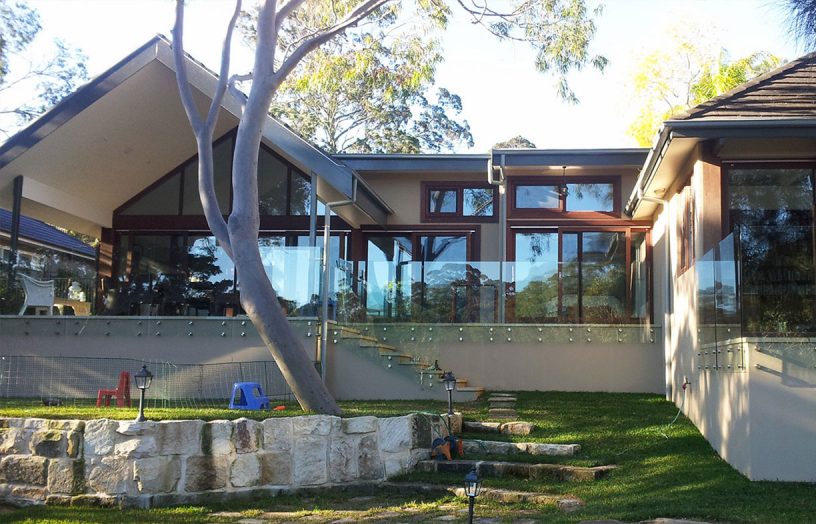 Buyers guides
Buyers guides
Windows that perform: A window and film buyers guide
Poorly performing windows can drag down the thermal performance of your home. Lance Turner looks at some solutions.
Read more

